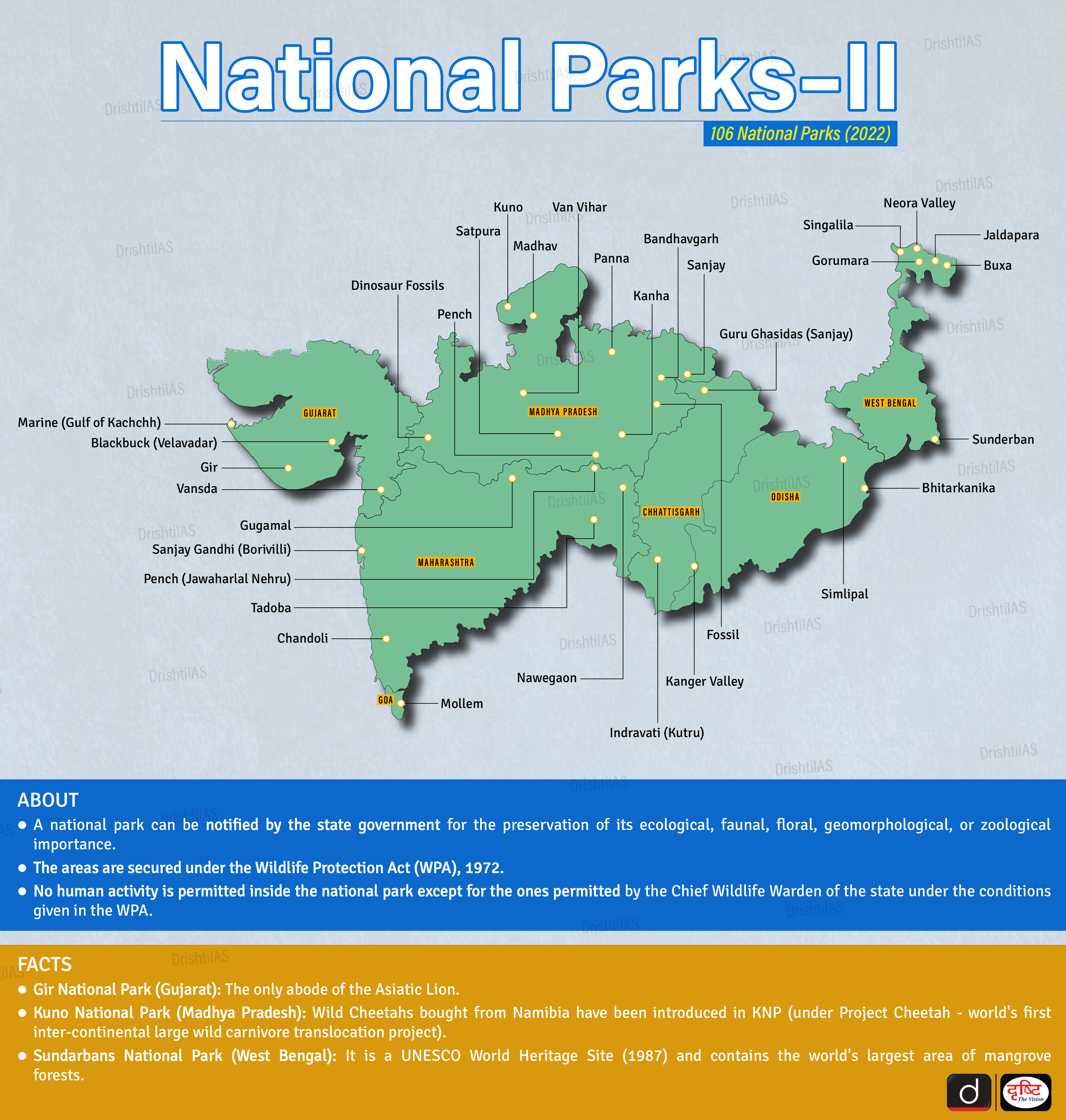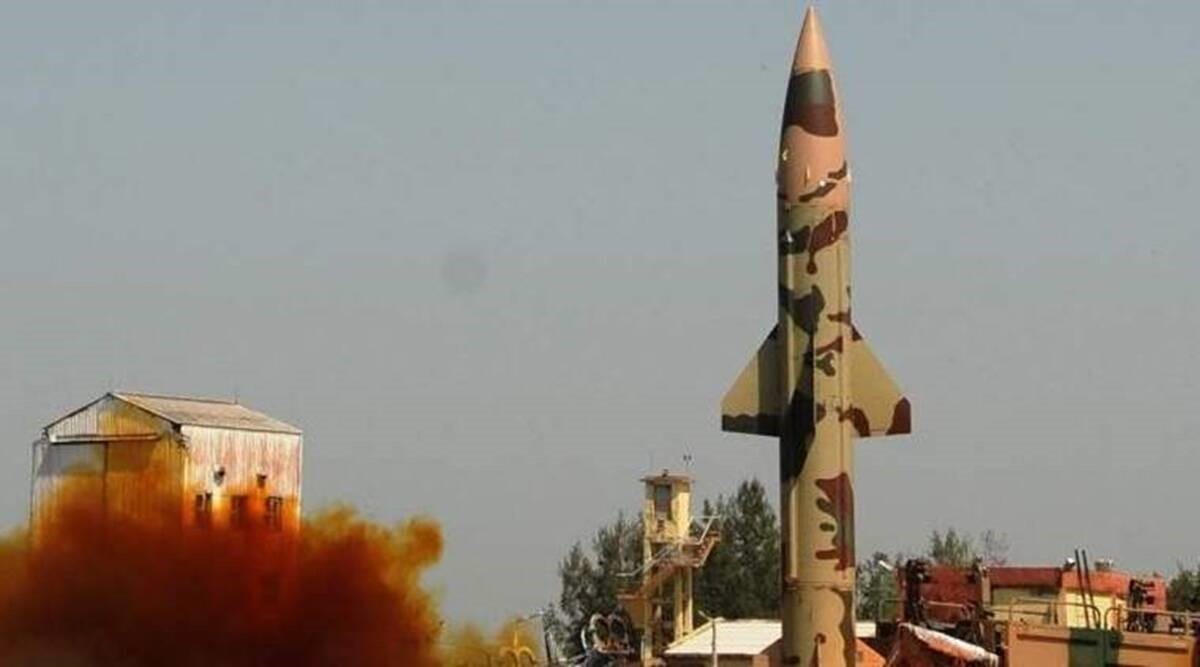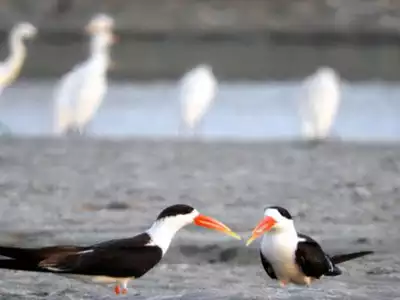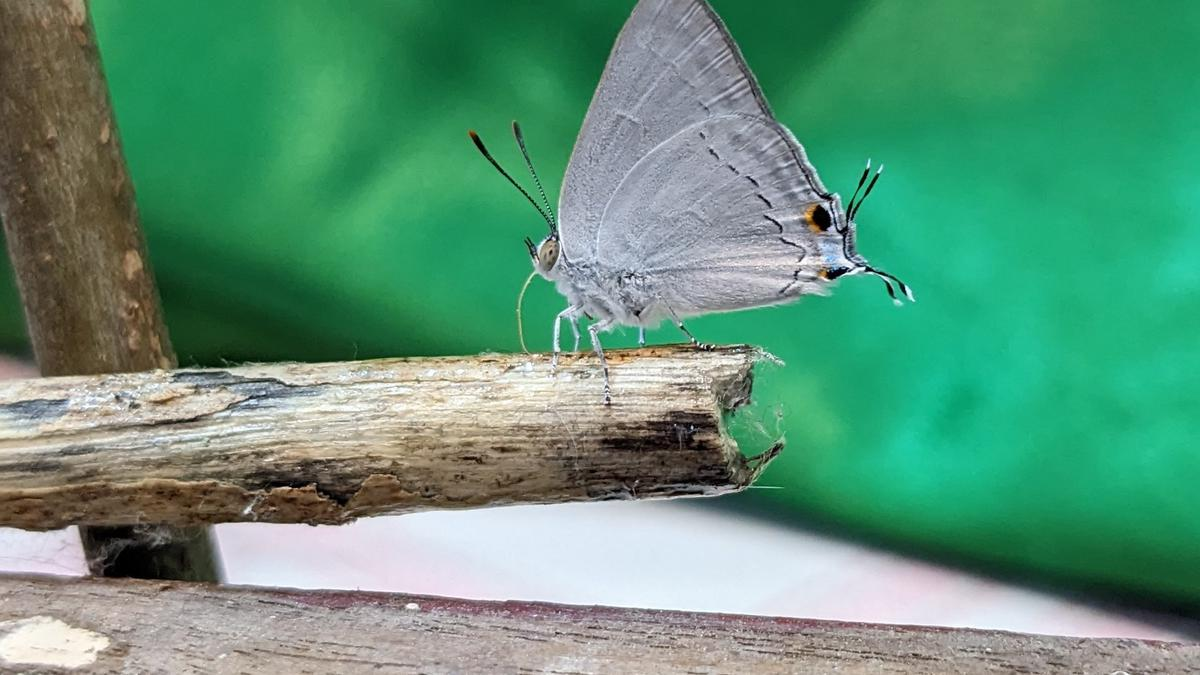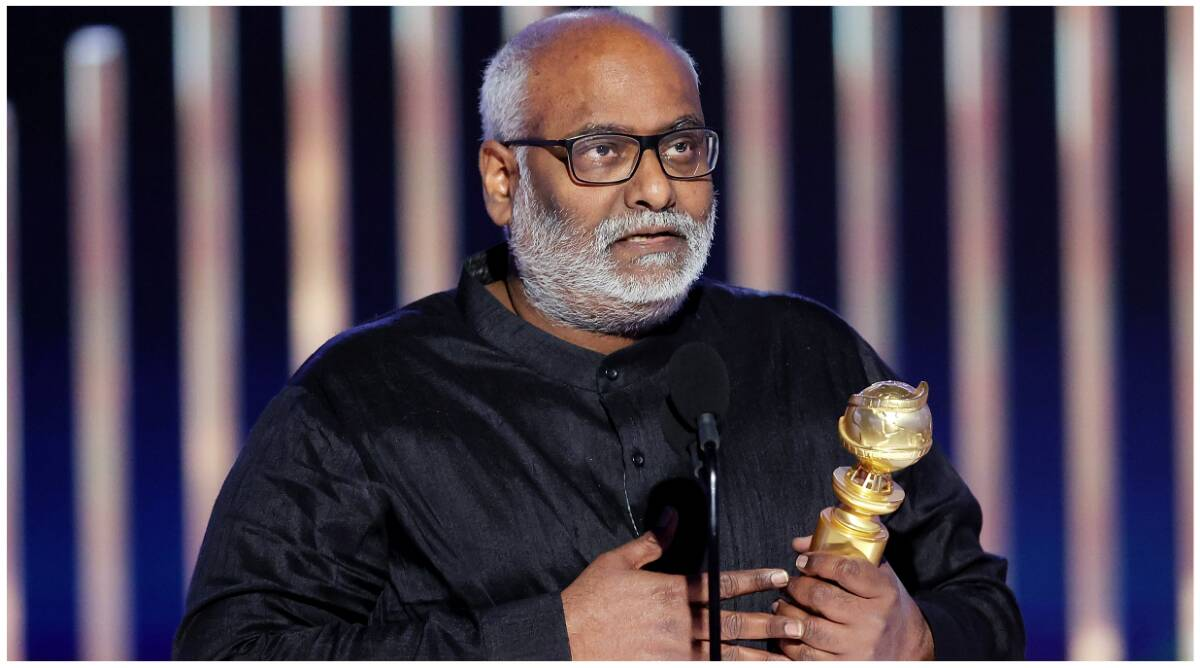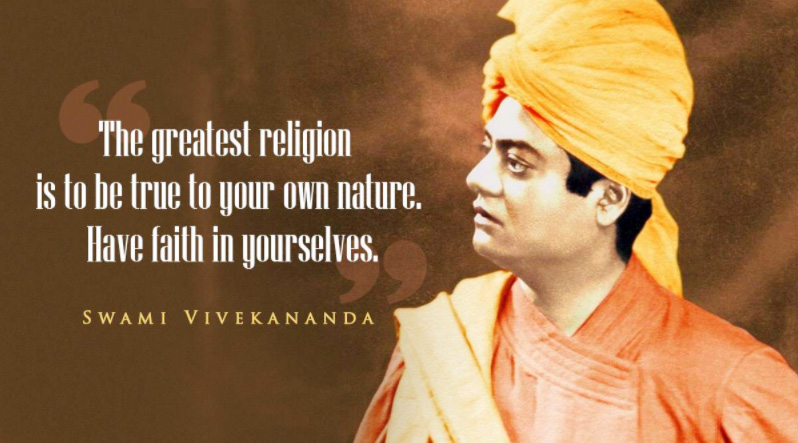Maps
Indian Polity
Ladakh’s Demand of Sixth Schedule
For Prelims: Parliament, Union Territory (UT) of Ladakh, Sixth Schedule of the Constitution, Autonomous District Councils (ADCs)
For Mains: Demand for the inclusion of Union Territory (UT) of Ladakh in the Sixth Schedule
Why in News?
Recently, the Ministry of Home Affairs (MHA) constituted a high-powered committee for the Union Territory of Ladakh to “ensure protection of land and employment” for the people of Ladakh.
- According to a few members of the committee, the MHA's order is vague and does not address their demand for inclusion in the Sixth Schedule.
- In September 2019, the National Commission for Scheduled Tribes recommended the inclusion of Ladakh under the Sixth Schedule, noting that the new UT was predominantly tribal (more than 97%) and its distinct cultural heritage needed preservation.
Why was the Committee Formed?
- Background:
- Civil society groups in Ladakh have been demanding protection of land, resources and employment for the past three years after the special status of the erstwhile State of Jammu and Kashmir under Article 370 of the Constitution was revoked by Parliament in 2019.
- The fear of big businesses and conglomerates taking away land and jobs from the local people have contributed to this demand.
- Purpose:
- To discuss measures to protect the region’s unique culture and language taking into consideration its geographical location and strategic importance.
- To strategize inclusive development and discuss issues related to the empowerment of the Ladakh Autonomous Hill District Councils of Leh and Kargil.
What is the Government’s Stand?
- As far as special status for Ladakh is concerned, the government is not very eager to give it.
- The MHA informed a parliamentary standing committee recently that the objective for inclusion of tribal population under the sixth schedule is to ensure their overall socio-economic development, which the UT administration has already been taking care of and that sufficient funds are being provided to Ladakh to meet its overall developmental requirements.
- According to the Ministry of Home Affairs, Ladakh’s inclusion in the Sixth Schedule would be difficult.
- The Constitution is very clear, Sixth Schedule is for the Northeast. For tribal areas in the rest of the country, there is the Fifth Schedule.
- According to a recent report tabled in Rajya Sabha, Ladakh administration recently increased the reservation for the Scheduled Tribes in direct recruitment from 10% to 45% which will significantly help the tribal population in their development.
- However, it remains the prerogative of the government — it can, if it so decides, bring a Bill to amend the Constitution for this purpose.
What is the Sixth Schedule?
- Article 244: The Sixth Schedule under Article 244 provides for the formation of autonomous administrative divisions — Autonomous District Councils (ADCs) — that have some legislative, judicial, and administrative autonomy within a state.
- The Sixth Schedule contains special provisions for the administration of tribal areas in the four north-eastern states of Assam, Meghalaya, Tripura and Mizoram.
- Autonomous Districts: The tribal areas in these four states have been constituted as autonomous districts. The governor is empowered to organise and re-organise the autonomous districts.
- The acts of Parliament or the state legislature do not apply to autonomous districts or apply with specified modifications and exceptions.
- The power of direction, in this regard, lies either with the President or Governor.
- District Council: Each autonomous district has a district council consisting of 30 members, of whom four are nominated by the Governor and the remaining 26 are elected on the basis of adult franchise.
- The elected members hold office for a term of five years (unless the council is dissolved earlier) and nominated members hold office during the pleasure of the governor.
- Each autonomous region also has a separate regional council.
- Powers of the Council: The district and regional councils administer the areas under their jurisdiction.
- They can make laws on certain specified matters like land, forests, canal water, shifting cultivation, village administration, the inheritance of property, marriage and divorce, social customs and so on. But all such laws require the assent of the Governor.
- They can constitute village councils or courts for trial of suits and cases between the tribes. They hear appeals from them. The jurisdiction of the high court over these suits and cases is specified by the governor.
- The district council can establish, construct or manage primary schools, dispensaries, markets, ferries, fisheries, roads and so on in the district.
- They are empowered to assess and collect land revenue and to impose certain specified taxes.
UPSC Civil Services Examination, Previous Year Question (PYQ)
Q1. Which of the following provisions of the Constitution of India have a bearing on Education? (2012)
- Directive Principles of State Policy
- Rural and Urban Local Bodies
- Fifth Schedule
- Sixth Schedule
- Seventh Schedule
Select the correct answer using the codes given below:
(a) 1 and 2 only
(b) 3, 4 and 5 only
(c) 1, 2 and 5 only
(d) 1, 2, 3, 4 and 5
Ans: (d)
Exp:
- Article 45 of the Directive Principle of State Policy provides for early childhood care and compulsory and free education for all children until they complete the age of 6 years. Hence, 1 is correct.
- The Eleventh Schedule includes 29 functions assigned to the Panchayat. Entry 17 of the list is related to education, including primary and secondary schools. Twelfth Schedule includes 18 functions assigned to municipal bodies. Entry 13 has provision for promotion of cultural, educational and aesthetic aspects. Hence, 2 is correct.
- The Fifth Schedule deals with administration of tribal areas under States other than Assam, Meghalaya, Tripura, Mizoram. Governor may, by public notification, direct that any particular Act of Parliament or of the Legislature of the State shall not apply to a Scheduled Area or any part thereof in the State subject to such exceptions and modifications as he may specify in the notification. Hence, 3 is correct.
- The Sixth Schedule deals with administration of tribal areas in Assam, Meghalaya, Tripura, Mizoram. It provides for District councils, which can establish, construct or manage primary schools. Hence, 4 is correct.
- The Seventh Schedule consists of Union, State and Concurrent List. It has provisions related to “education”. Hence, 5 is correct. Therefore, option (d) is the correct answer.
Q2. Under which Schedule of the Constitution of India can the transfer of tribal land to private parties for mining be declared null and void? (2019)
(a) Third Schedule
(b) Fifth Schedule
(c) Ninth Schedule
(d) Twelfth Schedule
Ans: (b)
Exp:
- Grant of mineral concessions in Scheduled Areas is guided by the provisions contained in Article 244 along with Fifth and Sixth Schedules to the Constitution relating to administration of the Scheduled Areas and Tribal Areas and the provisions of the Panchayats (Extension to the Scheduled Areas) Act, 1996 and the Scheduled Tribes and Other Traditional Forest Dwellers (Recognition of Forest Rights) Act, 2006 or any other relevant statutory acts protecting the interests of tribals.
- Under the Fifth Schedule, the Governor may by public notification, direct that any particular Act of Parliament or of the Legislature of the State shall or shall not apply to a Scheduled Area or any part thereof in the State.
- Thus, under the Fifth Schedule, transfer of tribal land to private parties for mining can be declared null and void. Therefore, option (b) is the correct answer.
Q3. The provisions in Fifth Schedule and Sixth Schedule in the Constitution of India are made in order to (2015)
(a) protect the interests of Scheduled Tribes
(b) determine the boundaries between States
(c) determine the powers, authority and responsibilities of Panchayats
(d) protect the interests of all the border States
Ans: (a)
- The Fifth Schedule lays out provision for Administration and Control of Scheduled Areas and Scheduled Tribes in states other than Assam, Meghalaya, Tripura and Mizoram.
- The Sixth Schedule deals with the administration of the tribal areas in Assam, Meghalaya, Tripura and Mizoram. Therefore, option (a) is the correct answer.
Indian Polity
Delegated Legislation
For Prelims: SC Judgement of Demonetisation, RBI Act 1934, Ordinances, Doctrine of Separation of Power
For Mains: Delegated Legislation - Significance and Criticism, Doctrine of Separation of Powers and Delegated Legislation
Why in News?
In the Supreme Court judgement on the Central Government’s decision of demonetisation, the majority ruling upheld the validity of the delegated legislation while the dissenting verdict noted that excessive delegation of power is arbitrary.
What is Delegated Legislation?
- About:
- Since the Parliament cannot deal with every aspect of the governance system by themselves, they delegate these functions to the authorities established by law. This delegation is noted in statutes, commonly called delegated legislations.
- E.g. - Regulations and by-laws (law made by a local authority which applies only in its area) under legislations.
- SC’s View on Delegated Legislation:
- The SC in Hamdard Dawakhana v Union of India (1959) case struck down delegation of powers on the grounds that it was vague.
- It held that the Centre’s power of specifying diseases and conditions under Drug and Magic Remedies (Objectionable Advertisements) Act 1954 is ‘uncanalised’, ‘uncontrolled’, and going beyond the permissible boundaries of valid delegation. Hence, the same was deemed unconstitutional.
- The Supreme Court in a 1973 ruling held that the concept of delegated legislation has evolved out of practical necessity and pragmatic needs of a modern welfare State.
- The SC in Hamdard Dawakhana v Union of India (1959) case struck down delegation of powers on the grounds that it was vague.
- Delegated Legislation in Demonetisation Case:
- As per the RBI Act, 1934 (Section 26(2)) the Central govt. is empowered to notify ceasing a particular denomination of currency as legal tender.
- Parliament, here, has delegated the power to alter the nature of legal tender to the central govt. which the latter exercised by issuing a gazette notification (legislative basis).
- This delegation of power to the Centre was challenged on the basis that Section 26(2) contains no policy guidelines on how the Centre can exercise its powers, thus it is arbitrary (and unconstitutional).
- As per the RBI Act, 1934 (Section 26(2)) the Central govt. is empowered to notify ceasing a particular denomination of currency as legal tender.
What is the Significance and Criticism of Delegated Legislation?
- Significance:
- It allows flexibility and adaptability in the law-making process. By delegating certain powers, the legislature can respond more quickly and efficiently to changing circumstances and emerging issues.
- Delegated authorities with extra skills, experience, and knowledge (in fields like technology, environment etc. where the Parliament may not always have an expertise) are more suitable for making law.
- Criticism:
- It can lead to a lack of accountability/transparency in the law-making process as laws made by executive agencies/administrative bodies are not subjected to the same level of public scrutiny and debate as laws made by legislature.
- Additionally, it can also lead to a concentration of power in the executive and administrative branches of government, which may undermine the principle of separation of powers.
- However, certain types of delegated legislation, such as ordinances must be approved by the legislature.
Way Forward
- Parliamentary control over delegated legislation in India is not as effective, there are no statutory provisions regarding ‘laying’ of delegated legislation.
- It is necessary to strengthen the committees of the Parliament and a separate law providing for uniform rules for delegating powers be enacted.
- Moreover, the citizens can ensure accountability and transparency in delegated legislation by staying informed about the laws and regulations being proposed and implemented by executive agencies and administrative bodies.
- They can also participate in public consultations and comment periods and hold the government accountable through their elected representatives.
- Additionally, the media can play a vital role in bringing attention to any issues with delegated legislation and providing a platform for public discourse.
Social Justice
Reports on Child Mortality and Stillbirths
For Prelims: Child Mortality, Stillbirths, UNICEF, Eat Right India, Fit India Movement, International Classification of Diseases, Preterm Births
For Mains: Issue of Stillbirths and Child Mortality in India, Government Policies & Interventions
Why in News?
Recently, two global reports on child mortality (Levels and Trends in Child Mortality) and stillbirths (Never Forgotten) were released by United Nations Inter-agency Group for Child Mortality Estimation (UN IGME).
What are the Findings of the Report?
- Levels and Trends in Child Mortality:
- Data Related to Mortality:
- Globally, 5 million children died before their fifth birthday (under-five mortality) in 2021.
- Over half of these (2.7 million) occurred among children aged 1-59 months, while the remainder (2.3 million) occurred in just the first month of life (neonatal deaths).
- India’s share in these child mortalities was estimated around 7 lakhs under-five deaths; 5.8 lakhs infant deaths (death before first birthday); and 4.4 lakhs neonatal deaths.
- Decline in Mortality Rate:
- The global under-5 mortality rate fell by 50% since the start of the century, while mortality rates in older children and youth dropped by 36%, and the stillbirth rate decreased by 35%.
- This can be attributed to more investments in strengthening primary health systems to benefit women, children and young people.
- However, gains have reduced significantly since 2010, and 54 countries will fall short of meeting the Sustainable Development Goals target for under-5 mortality.
- Region Wise Analysis:
- Sub-Saharan Africa and southern Asia continue to have the highest rates of child mortality, with children born in sub-Saharan Africa having the lowest chances of surviving.
- Access to Quality Health:
- Access to and availability of quality health care continues to be a matter of life or death for children globally.
- Most child deaths occur in the first five years, of which half are within the first month of life.
- For these youngest babies, premature birth and complications during labour are the leading causes of death.
- Rising Infectious Disease:
- Data Related to Mortality:
- Report on Stillbirth:
- Globally, an estimated 1.9 million stillbirths happened in 2021.
- In 2021, the absolute estimated number of stillbirths in India (2,86,482) was greater than the death amongst children in 1-59 months of age (2,67,565).
What is the Root of Many Child Deaths?
- Preterm Births (Children born before 37 weeks of pregnancy are completed):
- This is a challenge because these ‘preterm babies’ are two to four times at higher risk of death after birth in comparison to those born after 37 weeks of gestation.
- Globally, one in every 10 births is preterm; in India, one in every six to seven births is preterm.
- India has a high burden of preterm births, which means newborns in the country are at greater risk of complications and mortality.
- Stillbirths:
- The rates and number of both preterm births and stillbirths are unacceptably high and drive the neonatal, infant and child mortalities upwards in India. Thus, they demand urgent interventions.
- A baby who dies any time after 22 weeks of pregnancy, but before or during the birth, is classified as a stillborn.
- One of the reasons preterm births and stillbirths do not get due attention is lack of granular and reliable data.
- The rates and number of both preterm births and stillbirths are unacceptably high and drive the neonatal, infant and child mortalities upwards in India. Thus, they demand urgent interventions.
What are the Related Initiatives of India?
- POSHAN Abhiyaan: The government of India has launched the National Nutrition Mission (NNM) or POSHAN Abhiyaan to ensure a “Malnutrition Free India” by 2022.
- Anemia Mukt Bharat Abhiyan: Launched in 2018, the mission aims at accelerating the annual rate of decline of anaemia from one to three percentage points.
- The National Food Security Act (NFSA), 2013: It aims to ensure food and nutrition security for the most vulnerables through its associated schemes and programmes, making access to food a legal right.
- Pradhan Mantri Matru Vandana Yojana (PMMVY): Rs.6,000 is transferred directly to the bank accounts of pregnant women for availing better facilities for their delivery.
- Integrated Child Development Services (ICDS) Scheme: It was launched in 1975 and the scheme aims at providing food, preschool education, primary healthcare, immunisation, health check-up and referral services to children under 6 years of age and their mothers.
- Eat Right India and Fit India Movement are some other initiatives to promote healthy eating and healthy lifestyle.
What is UN IGME?
- UN IGME was formed in 2004 to share data on child mortality, improve methods for child mortality estimation, report on progress towards child survival goals and enhance country capacity to produce timely and properly assessed estimates of child mortality.
- UN IGME is led by United Nations Children’s Fund (UNICEF) and includes the World Health Organization, the World Bank Group and the United Nations Department of Economic and Social Affairs, Population Division.
What can be done to Prevent Stillbirths and Preterm Births?
- Scaling up Known and Proven Interventions:
- For reducing both stillbirths and preterm births, the focus must be on:
- Increasing access to family planning services;
- Improving antepartum services such as health and nutrition, including the intake of iron folic acid by pregnant mothers;
- Providing counselling on the importance of a healthy diet, and optimal nutrition;
- Identification and management of risk factors.
- For reducing both stillbirths and preterm births, the focus must be on:
- Effective Implementation of Guidelines:
- The interventions can be best delivered if data on preterm births and stillbirths are better recorded and reported.
- The maternal and perinatal deaths surveillance guidelines need to be effectively implemented and the International Classification of Diseases’ definition for perinatal mortality must be adopted.
- The use of this classification will help standardise the causes of stillbirth reporting.
- Alongside, India needs to identify the hot spot clusters of stillbirths and preterm births for local and targeted interventions.
- Allocate more Funding:
- In the National Health Policy of 2017, the government had committed to investing 2.5% of the GDP on health by 2025.
- Six years since then, the government’s allocation for health has increased only marginally.
- The two recent reports are reminders that it is time for the government to allocate more funds for health, starting with the upcoming Budget.
- In the National Health Policy of 2017, the government had committed to investing 2.5% of the GDP on health by 2025.
UPSC Civil Services Examination, Previous Year Questions (PYQs)
Prelims
Q. Which of the following are the objectives of ‘National Nutrition Mission’? (2017)
- To create awareness relating to malnutrition among pregnant women and lactating mothers.
- To reduce the incidence of anaemia among young children, adolescent girls and women.
- To promote the consumption of millets, coarse cereals and unpolished rice.
- To promote the consumption of poultry eggs.
Select the correct answer using the code given below:
(a) 1 and 2 only
(b) 1, 2 and 3 only
(c) 1, 2 and 4 only
(d) 3 and 4 only
Ans: (a)
Mains
Q. Can the vicious cycle of gender inequality, poverty and malnutrition be broken through microfinancing of women SHGs? Explain with examples. (2021)
Geography
Cold Wave
Prelims: Cold Wave, Westerly Winds, IMD, Fog, Indo-Gangetic Plain.
Mains: Factors Responsible for Cold Wave.
Why in News?
Delhi and other parts of northwest India have been reeling under a Cold Wave since the beginning of 2023.
- The lowest minimum temperature recorded this month was 1.9 degrees Celsius on January 8, the second-lowest minimum temperature in January in 15 years.
- Fog and low cloud coverage brought severe cold day conditions to the region, when temperatures remained below normal over parts of Delhi, Punjab, Haryana, Chandigarh, Himachal Pradesh, Rajasthan, Uttar Pradesh and Madhya Pradesh.
What Factors are Responsible for this Cold Wave?
- Large Scale Fog:
- One of the major factors contributing to colder than normal temperatures over north India in January 2023 is the large-scale fog cover, according to India Meteorological Department (IMD).
- Fog has been lasting for longer durations, preventing sunlight from reaching the surface and affecting the radiation balance. There is no heating in the day time, and then there is the impact of the night.
- Foggy Nights:
- Foggy or cloudy nights are usually associated with warmer nights, but if the fog remains for two or three days, cooling begins even at night.
- Light winds and high moisture near the land surface have been contributing to the formation of a blanket of fog over large swathes of the Indo-Gangetic plains in the morning.
- Westerly Winds:
- Since there has not been any significant impact of western disturbances over the region, cold northwesterly winds have also been contributing to low temperatures.
- Westerly and northwesterly winds of around 5 to 10 kmph in the afternoon have also been contributing to the dip in temperature
What is Cold Wave?
- About:
- A cold wave is a rapid fall in temperature within 24 hours to a level requiring substantially increased protection to agriculture, industry, commerce, and social activities.
- Cold Wave Conditions:
- For the plains, a cold wave is declared when the minimum temperature is 10 degrees Celsius or below and is 4.5 degrees Celsius (C) less than normal for two consecutive days.
- A "severe" cold day is when the maximum temperature is at least 6.5 notches below normal.
- For coastal stations, the threshold value of minimum temperature of 10 degree Celsius is rarely reached. However, the local people feel discomfort due to the wind chill factor which reduces the minimum temperature by a few degrees depending upon the wind speed.
- A wind chill factor is a measure of the cooling effect of the wind on the temperature of the air.
- For the plains, a cold wave is declared when the minimum temperature is 10 degrees Celsius or below and is 4.5 degrees Celsius (C) less than normal for two consecutive days.
- India’s Core Cold Wave Zone:
- India’s ‘core cold wave zone’ covers Punjab, Himachal Pradesh, Uttarakhand, Delhi, Haryana, Rajasthan, Uttar Pradesh, Gujarat, Madhya Pradesh, Chhattisgarh, Bihar, Jharkhand, West Bengal, Odisha and Telangana.
- Causes of Cold Wave in India:
- Absence of Cloud Cover in the Region: Clouds trap some of the outgoing infrared radiation and radiate it back downward, warming the ground.
- Snowfall in the upper Himalayas that has blown cold winds towards the region.
- Subsidence of Cold Air over the Region: Subsidence is the downward movement of cold and dry air closer to the surface.
- La Nina: Prevailing La Nina conditions in the Pacific Ocean. La Nina is the abnormal cooler sea surface temperatures reported along the equatorial Pacific Ocean and it is known to favour cold waves.
- During La Nina years, the severity of cold conditions becomes intense. The frequency and area covered under the grip of a cold wave becomes larger.
- Western Disturbances: Western disturbances can cause cold waves in India. Western disturbances are weather systems that originate in the Mediterranean Sea and move eastward, bringing cold winds, precipitation and cloud cover to the northwest regions of India. These disturbances can lead to a drop in temperature and cause cold wave conditions. However, not all western disturbances bring cold wave conditions.
What is the India Meteorological Department?
- IMD was established in 1875.
- It is an agency of the Ministry of Earth Sciences of the Government of India.
- It is the principal agency responsible for meteorological observations, weather forecasting and seismology.
Important Facts For Prelims
Prithvi-II Missile
Why in News?
Recently, India carried out a successful test launch of tactical ballistic missile Prithvi-II from a test range off the Odisha coast.
What are the Key Highlights about Prithivi-II Missile?
- About:
- Prithvi-II is an indigenously developed Surface-to-Surface Missile Short-Range Ballistic Missile (SRBM), which has a range of around 350km and can carry a one tonne payload.
- Prithvi II class is a single-stage liquid-fueled missile that has warhead mounting capability of 500 kg-1000kg.
- The missile is a proven system and is capable of striking targets with a very high degree of precision.
- The state-of-the-art missile uses an advanced inertial guidance system with manoeuvring trajectory to hit its target.
- It was initially developed for the Indian Air Force as its primary user and was later inducted into the Indian Army as well.
- While the missile was inducted into India's Strategic Forces Command for the first time in 2003, it was the first missile developed under the IGMDP.
- Developed by:
- Defence Research and Development Organisation (DRDO) of India under its Integrated Guided Missile Development Programme (IGMDP).
What are the Prithvi Missiles?
- The Prithvi missile system comprises various tactical Surface-to-Surface Short-Range Ballistic Missiles (SRBM).
- Its development began in 1983, and it was India’s first indigenous ballistic missile.
- It was first test-fired in 1988, from Sriharikota, SHAR Centre.
- It has a range of from 150 to 300 km.
- The naval variant of Prithvi I and Prithvi III class missiles have the code-name Dhanush.
- The propulsion technology was likely based on the Soviet SA-2 surface-to-air missile.
- Soviet SA-2 Surface-to-Air Missile:
- Developed in the mid-1950s, the Soviet SA-2 surface-to-air missile was the first effective Soviet Union surface-to-air missile.
- Developed as a missile for the battlefield, it could carry a nuclear warhead in its role as a tactical nuclear weapon.
- Soviet SA-2 Surface-to-Air Missile:
- The Prithvi I missiles have been in service with the Indian Army since 1994.
- Reportedly, Prahar missiles are replacing with Prithvi I missiles.
- Prithvi II missiles have been in service since 1996.
- Prithvi III having a more extended range of 350 km, was successfully test-fired in 2004.
UPSC Civil Services Examination, Previous Year Question(PYQ)
Q. With reference to Agni-IV Missile, which of the following statements is/are correct? (2014)
- It is a surface-to-surface missile.
- It is fuelled by liquid propellant only.
- It can deliver one-tonne nuclear warheads about 7500 km away.
Select the correct answer using the code given below:
(a) 1 only
(b) 2 and 3 only
(c) 1 and 3 only
(d) 1, 2 and 3
Ans: (a)
Exp:
- Agni-IV is a nuclear-capable long-range ballistic missile of India, with a strike range of 4,000 km.
- The indigenously developed Agni-IV is a two-stage surface-to-surface missile. It is 20 metres long with a weight of 17 tonnes. Hence, statement 1 is correct.
- It is a two stage solid fuelled system that can carry a one-tonne nuclear warhead over a distance of 4,000 kilometres. Hence, statements 2 and 3 are not correct.
- Therefore, option (a) is the correct answer.
Important Facts For Prelims
Indian Skimmers
Why in News?
As per the Asian Waterbird Census 2023 (recommended dates for the AWC are 7 – 22 January) which has been started recently, the Godavari estuary in Andhra Pradesh has become a prime and safe habitat for the Indian Skimmer ( Rynchops albicollis).
- Around 250 Indian Skimmers, were sighted in Coringa Wildlife Sanctuary.
What are Indian Skimmers?
- About:
- Another common name for Indian skimmers is Indian scissors bill.
- They are more widespread in winter; the Indian skimmer is found in the coastal estuaries of western and eastern India.
- The species can be sighted near the Chambal River in Central India, in few parts of Odisha and in Andhra Pradesh.
- Major Threats:
- Habitat degradation, excessive and widespread increases in disturbances near the rivers.
- Protection Status:
- IUCN Red List Status: Endangered
- CITES: Not listed
Coringa Wildlife Sanctuary
- The Government declared a part of the Godavari mangrove system as Coringa Wildlife Sanctuary in 1978 to rehabilitate the salt water crocodile and to protect the other endangered species, such as Olive Ridley turtles and Indian Otter.
- About 120 species of resident and migratory birds depend on this area for breeding and nesting.
Asian Waterbird Census
- Every January, thousands of volunteers across Asia and Australasia visit wetlands in their country and count waterbirds. This citizen-science programme supports the conservation and management of wetlands and waterbirds worldwide.
- The AWC is an integral part of the global waterbird monitoring programme, the International Waterbird Census (IWC), coordinated by Wetlands International.
Important Facts For Prelims
White Tufted Royal Butterfly
Why in News?
Recently, a team of butterfly observers and researchers have found the White Tufted Royal Butterfly, a rare butterfly species in Kannur, Kerala which was earlier spotted in Agasthyakoodam in 2017 and Shendurney Wildlife Sanctuary in 2018.
- The butterfly is protected under Schedule 2 of the Wildlife Protection Act, 1972.
What are the Key Facts About Butterflies?
- About:
- Butterflies are insects from the order Lepidoptera of phylum Arthropoda which also includes moths.
- Adult butterflies have large, often brightly coloured wings, and conspicuous, fluttering flight.
- Recently, a Himalayan butterfly known as Golden Birdwing (Troides aeacus) has been discovered as India’s largest butterfly after 88 years.
- Significance:
- Rich Biodiversity: The abundance of butterflies in any area represents rich biodiversity.
- Indicator Species: The butterfly acts as an indicator species.
- An indicator species provides information on the overall condition of the ecosystem and of other species in that ecosystem. They reflect the quality and changes in environmental conditions as well as aspects of community composition.
- Pollinator: It acts as a pollinator by helping in pollination and conserving several species of plants.
UPSC Civil Services Examination Previous Year Question (PYQ)
Q. Recently, for the first time in our country, which of the following States has declared a particular butterfly as State Butterfly? (2016)
(a) Arunachal Pradesh
(b) Himachal Pradesh
(c) Karnataka
(d) Maharashtra
Ans: (d)
Rapid Fire
Rapid Fire Current Affairs
Indian Song wins Golden Globe Award
Recently, music composer M M Keeravani accepted the award for Best Original Song for Telugu film RRR (directed by SS Rajamouli) at the 80th Golden Globe Awards. ‘Naatu Naatu’ becomes the first Asian song to win the coveted award.
Golden Globe Award, presented annually by the Hollywood Foreign Press Association (HFPA), is a recognition of outstanding achievement in motion pictures and television during the previous year. The Golden Globes are considered second in importance both to the Academy Awards (or Oscars) for films.
Read More - India’s Film Award
Swami Vivekananda and National Youth Day 2023
Every year 12th January is celebrated as National Youth Day (NYD) to mark the birth anniversary of Swami Vivekananda. NYD was declared by GoI in 1984. Theme for 2023 - ‘Viksit Yuva - Viksit Bharat’.
Swami Vivekananda was a key figure in the introduction of the Hindu philosophy of Vedanta and Yoga to the Western world, and he is credited with bringing Hinduism to the status of a major world religion during the late 19th century.
He was also a strong advocate for social justice and worked to uplift the status of women and lower castes in Indian society. He was the chief disciple of the 19th-century mystic Ramakrishna Paramhansa and he established Ramakrishna Mission in 1897.
Read More - Swami Vivekananda, National Youth Day
Uganda's Worst Ebola Outbreak Ends: WHO
After 4 months and 55 deaths, the latest Ebola epidemic in Uganda (worst in 2 decades) was declared over by the WHO. The outbreak was caused by the Sudan strain of the virus.
Ebola virus disease is a hemorrhagic fever that is transmitted through body contact with sick or dead people or animals (a “viral hemorrhagic fever” is a condition that damages the overall cardiovascular system, and reduces the body's ability to function on its own). Its symptoms include fever, fatigue and headaches, followed by vomiting, diarrhoea, and internal and external bleeding. Ebola virus was first discovered in 1976 near the Ebola River in DRC.
While there are existing Ebola vaccines (Ervebo vaccine), they do not protect against the Sudan strain.
Read More - Ebola Virus Disease
Swadesh Darshan Project
Beypore and Kumarakom are the (only) two tourism destinations Kerala has included in the detailed project report (DPR) to be submitted to the Centre for Phase-2 of the Swadesh Darshan Project.
Beypore has historic importance as a port town. It is also globally famed for its Beypore Uru (boat) and the beautiful seashore, which could boost its tourism sector in a big way.
Swadesh Darshan Scheme was first launched in 2014-15 by the Ministry of Tourism and Culture for the integrated development of theme-based tourist circuits. Swadesh Darshan 2.0 moves away from theme-based tourist circuits and focuses on reviving up destination tourism. The govt. has identified 15 States under this scheme to be promoted as part of India’s new domestic tourism policy.
Read More - Swadesh Darshan 2.0, GI Tag for Beypore Uru

